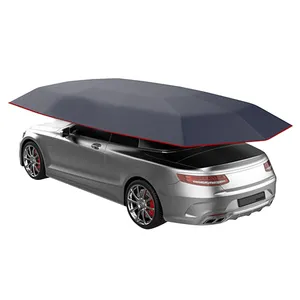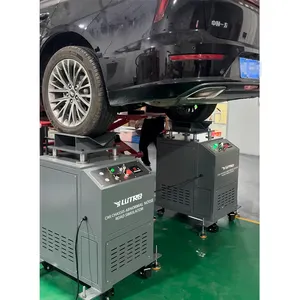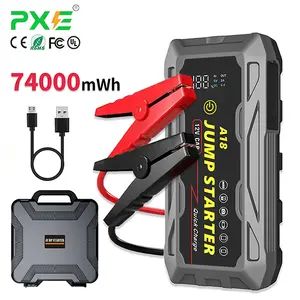Popolare nel tuo settore





Portatile DC 12V 5T Multi-funzionale elettrico idraulico jack piano con avvitatore elettrico
67,73 € - 69,58 €
Ordine minimo: 2 insiemi
Spedizione per pezzo: 66,58 €






Supporto professionale per auto per aerei con Jack per treppiede idraulico regolabile resistente
927,69 € - 1.206,00 €
Ordine minimo: 3 parti







Puntelli regolabili per la costruzione di ponteggi TYT puntelli telescopici in acciaio per puntellamento
5,57 € - 7,43 €
Ordine minimo: 1000 parti







Costruzione martinetto telescopico puntello in acciaio regolabile puntello puntello puntello puntello puntello
5,57 € - 8,17 €
Ordine minimo: 100 parti







Personalizzazione telescopica IP65 impermeabile 6V DC cilindro elettrico Mini attuatori lineari elettrici per aria telescopica
13,60 € - 19,37 €
Ordine minimo: 2 parti







Fornitori di fabbrica doppio cilindro verticale sollevamento alto idraulico auto Jack di trasmissione telescopico
70,51 € - 78,86 €
Ordine minimo: 1 insieme








Idraulico Bottiglia di Jack Con Doppio Ascensore Telescopica Rams Per Una Lunga Corsa
2,79 € - 13,92 €
Ordine minimo: 1 insieme




Trasmissione telescopica idraulica di alto ascensore di capacità 0.5T Jack
55,67 € - 111,33 €
Ordine minimo: 1 parte


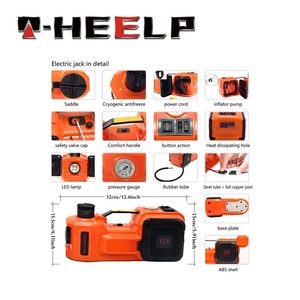


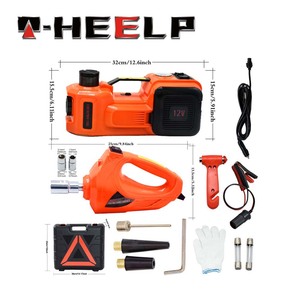
Compressore d'aria idraulico telescopico di alta qualità 5T 12v elettrico 3 in 1 martinetto idraulico automobilistico per auto elettrica
58,45 € - 64,02 €
Ordine minimo: 1 insieme

Bottiglia di Jack Tipo 16 ton red telescopica bottiglia idraulico bottiglia di jack
13,92 € - 16,70 €
Ordine minimo: 2 insiemi
Spedizione per pezzo: 58,65 €
Ricerche correlate:
jack peluchepiccolo jack telescopicomartinetto telescopico meccanicomartinetti telescopici 3tjack telescopico hyvajack tracmartinetto telescopico 20 tonnellatejack enrpacjack t402 tonnellate jackjack di alimentazione fujitsu dcjack ethernet verticalejack di potenza lgjack di potenza sony dcjack di alimentazione dc 2






Regolabile in Altezza Idraulico Telescopico Trasmissione Jack con Pompa A Pedale
88,14 € - 111,33 €
Ordine minimo: 1 insieme






0.5Ton Jack di trasmissione telescopica per auto o camion CE omologato 0.5 Ton trasmissione portatile auto Jack Jack 500 kg
45,04 € - 46,48 €
Ordine minimo: 60 parti



Piede pedale Telescopica Idraulica Jack Trasmissione WX-97265
46,39 € - 166,99 €
Ordine minimo: 1 insieme






2200LB 2 Fase Heavy Duty 1 Ton Telescopica Idraulica Jack Trasmissione
135,08 € - 278,12 €
Ordine minimo: 1 parte












Di alta Qualità Potente Telescopica 12V Idraulico Presa Elettrica Per Auto
46,76 € - 50,08 €
Ordine minimo: 4 insiemi
Spedizione per pezzo: 52,92 €






Prezzo a buon mercato usato 500kg telescopica trasmissione idraulica jack per la vendita
77,13 € - 84,29 €
Ordine minimo: 50 parti






Di alta Qualità Potente Telescopica 12V Idraulico Presa Elettrica Per Auto
63,09 € - 83,50 €
Ordine minimo: 1 insieme






Martinetto telescopico idraulico 2 ton 6T martinetto per sollevatore idraulico a doppio pistone
10,67 € - 11,14 €
Ordine minimo: 50 parti






Jack telescopico idraulico chiudibile a chiave del doppio dado agente resistente da 500 tonnellate
8.404,83 € - 8.664,58 €
Ordine minimo: 1 parte

Auto Cambio Verticale Telescopica 2T basso di trasmissione jack
228,68 € - 324,69 €
Ordine minimo: 1 parte
Spedizione per pezzo: 380,78 €




Mini 100t martinetto idraulico bottiglia& idraulici telescopici
3,72 € - 139,16 €
Ordine minimo: 1 parte


Vendita calda OEM Strumento di 0.5T Camion Idraulico Auto Telescopica Trasmissione Jack
92,77 €
Ordine minimo: 100 insiemi






Strumento di riparazione Auto 20T Auto jack telescopico idraulico bottiglia di jack
38,97 € - 46,39 €
Ordine minimo: 1 parte
Spedizione per pezzo: 47,60 €












Atlifix 6 Ton durevole idraulico portatile rosso auto telescopica bottiglia di jack idraulico auto jack ascensore martinetto idraulico
6,96 € - 8,45 €
Ordine minimo: 500 parti













Jack di trasmissione idraulico telescopico idraulico da 0.5 tonnellate ad alto sollevamento
66,18 € - 75,63 €
Ordine minimo: 100 insiemi






Presa idraulica telescopica per auto DC 12V 5T multifunzionale e Set di chiavi elettriche
72,71 €
Ordine minimo: 1 insieme
Spedizione per pezzo: 40,68 €






Fabbrica 1 Ton Capacità di Alta Ascensore Idraulico Telescopico Trasmissione Jack per la vendita
210,19 € - 227,71 €
Ordine minimo: 50 parti






Martinetto idraulico della bottiglia dei martinetti telescopici resistenti da 32 tonnellate di fabbricazione cinese con alta qualità
15,69 € - 17,26 €
Ordine minimo: 500 parti






TIIKERI Attrezzi per il Veicolo Auto A Basso Profilo Idraulica 0.5 ton di trasmissione Jack Per Il Negozio Telescopica Trasmissione Piano Jack
148,43 € - 194,82 €
Ordine minimo: 50 parti








Heavy duty 2 Stage manuale camion alto sollevamento idraulico telescopico trasmissione martinetto con ruote
68,65 € - 82,57 €
Ordine minimo: 1 parte
Migliori categorie
Su jack telescopico
Preparati per gestire qualsiasi problema con il tuo veicolo o fai scorta per il tuo garage con un'eccellente gamma di. jack telescopico su Alibaba.com .. jack telescopico sono indispensabili per sollevare veicoli e anche altri oggetti per eseguire riparazioni, lavori di verniciatura o qualsiasi altra azione simile .. < jack telescopico sono disponibili in diverse altezze e possono sopportare quantità di peso variabili, quindi è essenziale scegliere quello giusto per lo scopo previsto. Anche per questo motivo è necessario fare scorta di molti tipi diversi per i proprietari di garage e per coloro che riparano veicoli.
Le jack telescopico disponibili su Alibaba.com sono realizzate con i migliori materiali di qualità come acciaio e alluminio che sono garantiti per non arrugginire o corrodersi .. jack telescopico sono disponibili in molti modelli adatti a scopi specifici. Questi includono martinetti da pavimento, a bottiglia e a forbice. Molti. jack telescopico può essere personalizzato e regolato. Ad esempio, le altezze possono essere regolate a seconda dello scopo. Le varianti idrauliche e di fulcro sono esempi del tipo di articoli offerti.
Le jack telescopico offerte sono dotate di molte funzioni che migliorano le prestazioni. Ad esempio, hanno sedili imbottiti per evitare di graffiare lo strato di vernice del veicolo. jack telescopico sono progettati per essere leggeri e facili da trasportare in modo che l'utente non venga mai colto di sorpresa. Molti. jack telescopico hanno un involucro espanso e un aspetto esteriore elegante.
Sfoglia la vasta gamma di. jack telescopico su Alibaba.com e scegli quelli più adatti a te .. jack telescopico i fornitori farebbero bene a fare scorta di questi articoli di alta qualità da questo sito in quanto sono prezzi competitivi senza pari. Trova le migliori offerte oggi.
Le jack telescopico disponibili su Alibaba.com sono realizzate con i migliori materiali di qualità come acciaio e alluminio che sono garantiti per non arrugginire o corrodersi .. jack telescopico sono disponibili in molti modelli adatti a scopi specifici. Questi includono martinetti da pavimento, a bottiglia e a forbice. Molti. jack telescopico può essere personalizzato e regolato. Ad esempio, le altezze possono essere regolate a seconda dello scopo. Le varianti idrauliche e di fulcro sono esempi del tipo di articoli offerti.
Le jack telescopico offerte sono dotate di molte funzioni che migliorano le prestazioni. Ad esempio, hanno sedili imbottiti per evitare di graffiare lo strato di vernice del veicolo. jack telescopico sono progettati per essere leggeri e facili da trasportare in modo che l'utente non venga mai colto di sorpresa. Molti. jack telescopico hanno un involucro espanso e un aspetto esteriore elegante.
Sfoglia la vasta gamma di. jack telescopico su Alibaba.com e scegli quelli più adatti a te .. jack telescopico i fornitori farebbero bene a fare scorta di questi articoli di alta qualità da questo sito in quanto sono prezzi competitivi senza pari. Trova le migliori offerte oggi.

